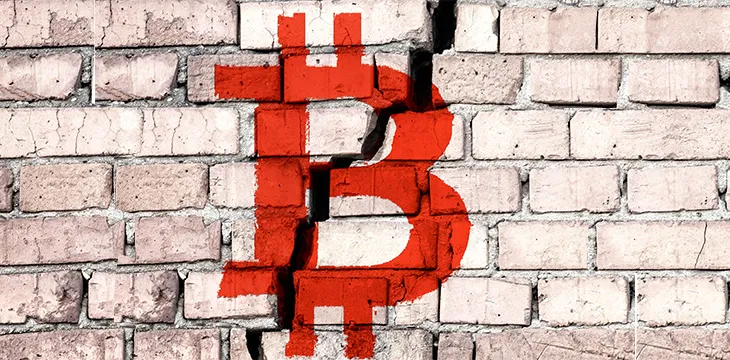|
Getting your Trinity Audio player ready...
|
As SegWitCoin (BTC) continues to hover around the $10,000 mark and investors demand more utility from the cryptocurrency, miners are piling on hash rate to meet demand. What many are choosing to ignore though is that a crisis point for miners is coming, one that could crash the entire BTC market.
As Cointelegraph recently reported, BTC hash rates have topped 94 quintillion hashes per second, and will quickly approaching a milestone figure of 100 quintillion. This means that more mining power is being applied to the BTC blockchain, and the climb in hash rate has coincided nicely with the steady climb of BTC in 2019. A higher price in BTC is attracting miners, seeking profits from block rewards.
If you believe the promoters of BTC, this is all good news, and signifies a shift from fiat to BTC.
#Bitcoin hash set to break 100 Q. This will start to become a problem for fiat as data centers dedicated to maintaining fiat systems are pulled into the BTC black hole of true value.
— Max Keiser (@maxkeiser) September 8, 2019
This celebration of the “good times” in BTC is blind to a fairly obvious dead-end that is coming in just a few months: Because BTC can’t scale, the expected May 2020 halving of block rewards will destroy miner incentives.
Currently, 12.5 BTC is the reward for successfully mining a block. After the halving, that reduces to 6.25 BTC. Although many people could hype you into believing different, halving has nothing to do with the price of the coin. This has been proven repeatedly in the past; the halving is simply baked into the price.
Even at the current reward rate, miners found it difficult to make a profit until BTC prices recovered to near where it’s currently at. When that price is halved, their rewards won’t cover their costs.
Of course, scaling solves this problem, as Bitcoin SV (BSV) is proving. With massive blocks, more transactions can fit in each block, and transaction fees are supplanting block rewards as the economic incentive of miners. Even with the next halving, transaction fees will make it worthwhile for miners to continue working on the BSV chain.
Making things worse, the BTC community will be caught in a terrible choice. If mining power drops off and hash rate declines, the network will remain congested, expensive and slow, providing no utility at all to its users. The price will decline as users find even basic use of BTC futile.
But if mining power continues at its current rate and difficulty continues to increase, the existing mining hardware of many operations will be incapable of mining new blocks, forcing them to pay for costly upgrades to continue mining a reduced reward. Then they can potentially continue mining at a loss after a costly upgrade.
This is all a consequence of BTC development continuing without a thought for mining incentives. As block rewards have been seen as enough, the entire network has been dependent on market prices, rather than any real utility.
BSV has already solved this problem by keeping miners at the top of mind. Increasing block sizes will mean more transaction fees, which will continue to incentivize miners for long to come.

 07-04-2025
07-04-2025 





